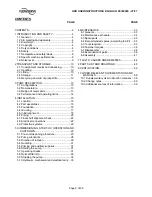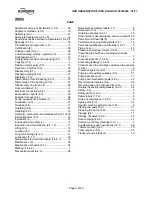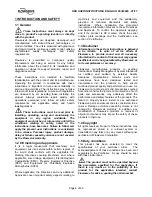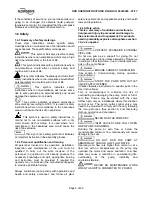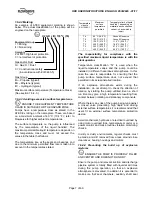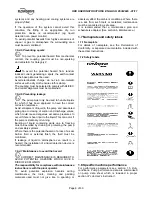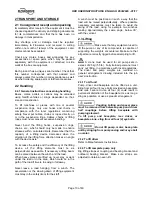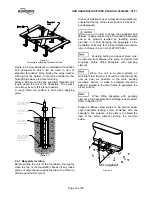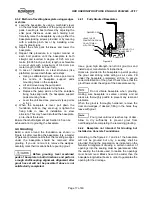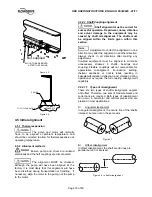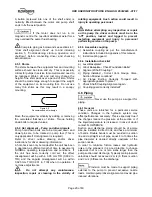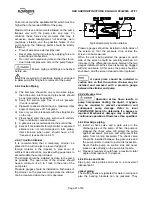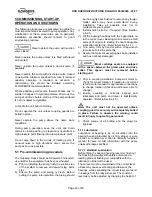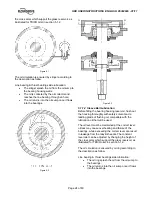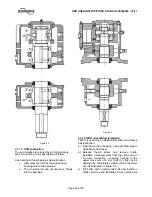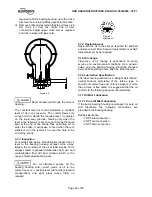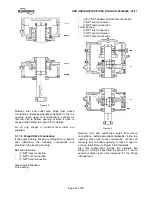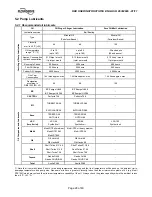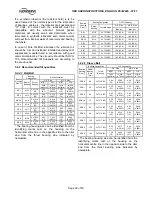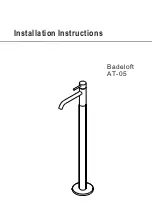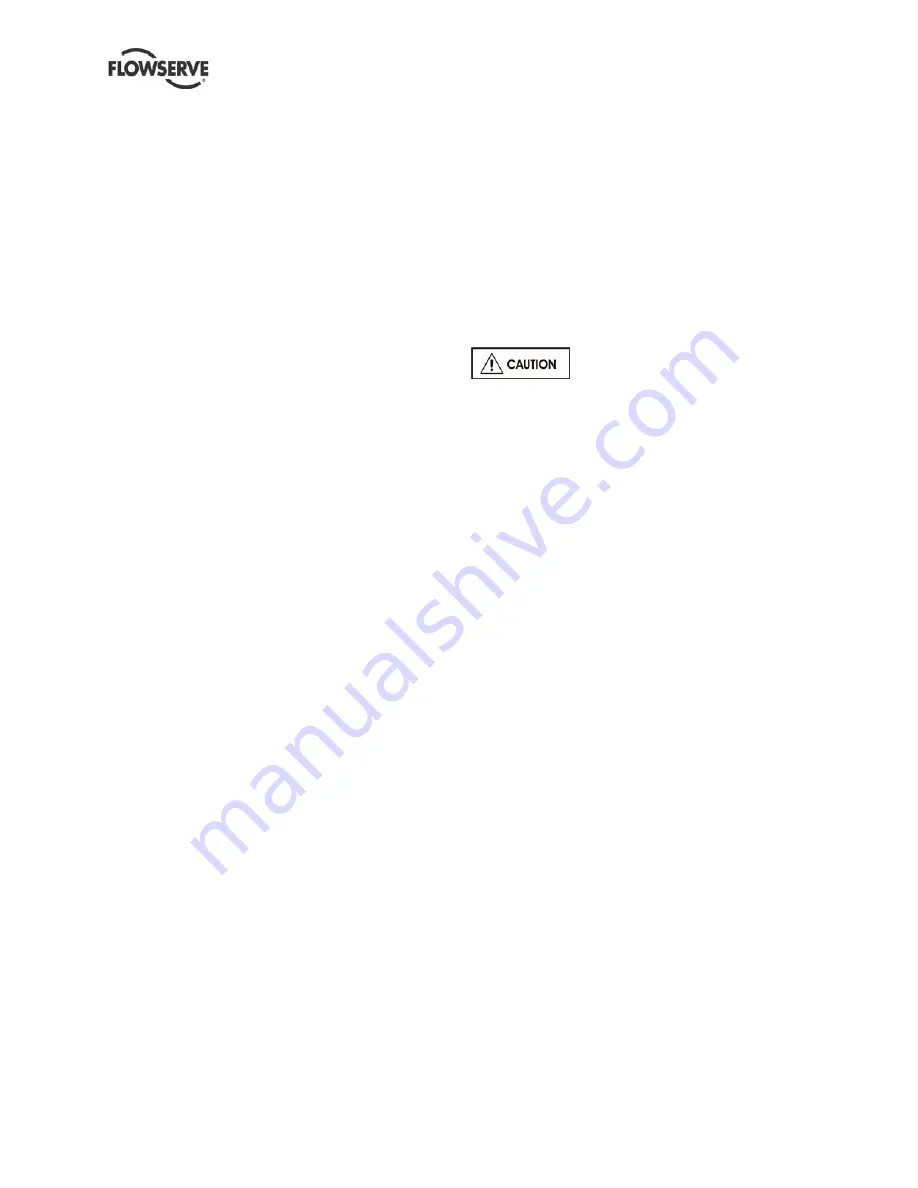
HDX USER INSTRUCTIONS ENGLISH 85392696 - 01/11
Page 14 of 60
3.3.7 Shaft seals
The mechanical seals, attached to the pump shaft,
seal the pumped liquid from the environment.
3.3.8 Driver
The driver is normally an electric motor. Different
drive configurations may be fitted such as internal
combustion engines, turbines, hydraulic motors etc
driving via couplings, belts, gearboxes etc.
3.3.9 Coupling/Coupling guards
Flexible spacer couplings are provided in various
makes and models to suit customer preference.
(Aluminium non- hinged guards are provided).
3.3.10 Baseplate
Standard baseplates are welded steel, drain pan type
in conformance with API 610 standardized
dimensions. Horizontal driver alignment screws and
vertical baseplate levelling screws are provided when
required by API.
Special baseplates can be supplied to suit individual
installation circumstances.
3.3.11 Accessories
Accessories may be fitted when specified by the
customer.
Baseplates are fabricated and machined so to
guarantee the flatness and parallelism of pads as
required by API standard. The requirement is met by
supporting and clamping the baseplate at the
foundation bolt holes only.
3.4 Performance and operating limits
This product has been selected to meet the
specifications of your purchase order see section 1.5.
These pumps are furnished for a particular service
condition. Changes in the hydraulic system may
affect the pump's performance adversely.
This is especially true if the changes reduce the
pressure at the suction flange or if the liquid
temperature is increased. In case of doubt, contact
the nearest FLOWSERVE office.
3.4.1 Effect of specific gravity
Pump capacity and total head in meters (feet) do not
change with SG, however pressure displayed on a
pressure gauge is directly proportional to SG. Power
absorbed is also directly proportional to SG. It is
therefore important to check that any change in SG
will not overload the pump driver or over-pressurize
the pump.
3.4.2 Effects of viscosity
The pump is designed to deliver rated capacity and
rated head for a liquid with a particular viscosity.
For a given flow rate the total head reduces with
increased viscosity and increases with reduced
viscosity. Also for a given flow rate the power
absorbed increases with increased viscosity, and
reduces with reduced viscosity.
When contemplating operation at some viscosity
other than the one for which the pump was originally
designed and/or applied, the changed conditions
should be referred to FLOWSERVE for
recommendations.
When pump is handling heavy
viscous liquid, the temperature of the liquid must
allow it to be pumped easily. Liquid may have to
be heated prior to pump start-up.
3.4.3 Changing the pump speed
Changing pump speed effects flow, total head, power
absorbed, NPSH
B
R
B
, noise and vibration. Flow varies in
direct proportion to pump speed. Head varies as
speed ratio squared. Power varies as speed ratio
cubed. If increasing speed it is important therefore to
ensure the maximum pump working pressure is not
exceeded, the driver is not overloaded,
NPSH
B
A
B
>NPSH
B
R
B
, and that noise and vibration are
within local requirements and regulations.
3.4.4 Net Positive Suction Head (NPSH)
Any liquid, hot or cold, must be pushed into the
impeller of the pump by absolute pressure, such as
the atmospheric or vessel pressure from which the
pump takes its suction.
The head in feet of liquid necessary to push the
required flow into the pump is called Net Positive
Suction Head.
This value, more commonly called NPSH, is
measured above the vapour pressure of the liquid at
the pumping temperature.
There are two kinds of NPSH: the NPSH
B
R
B
is the head
required by the pump to cover the losses in the pump
suction - that is shown on the pump characteristic
curve.
The second, NPSH
B
A
B
, is the head available in the
system, taking into account friction loss in suction
piping, valves, fittings etc. In all cases the NPSH
B
A
B
,
measured above vapour pressure, must exceed the
NPSH
B
R
B
in order to push the liquid into the pump.
Failure to have this will result in both bad
performance and mechanical damage to the pump,
and in certain cases actual pump failure.
If any change in NPSH
B
A
B
is proposed, ensure its
margin over NPSH
B
R
B
is not significantly eroded. Refer


